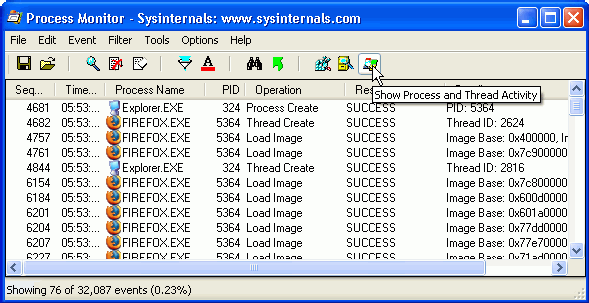

By default, Process Monitor logs almost all registry and file activity on the system.įirst, launch Process Monitor, then press Ctrl-E (or click the magnifying glass icon) to temporarily prevent it from capturing any data. Once you’ve downloaded Process Monitor, the first step is to filter its output to include only the program you are interested in. Although PowerShell documents these keys and makes its automated configuration a breeze, it illustrates the general technique. To illustrate this, we will use the Sysinternals' Process Monitor to discover PowerShell’s execution policy configuration keys. While many programs document their registry configuration settings, many still do not.Īlthough these programs may not document their registry settings, you can usually observe their registry access activity to determine the registry paths they use. Many programs do not, however, so the solution is to look through their documentation in the hope that they list the registry keys and properties that control their settings. In an ideal world, all programs would fully support command-line administration and configuration through PowerShell cmdlets. Use Sysinternals' Process Monitor to observe registry access by that program. You want to automate the configuration of a program, but that program does not document its registry configuration settings. Discover Registry Settings for Programs Problem To give a glimpse into the writing process behind my upcoming “Windows PowerShell - The Definitive Guide” (O’Reilly,) I’ll occasionally post entries “as the author sees it.” This entry illustrates how to discover registry settings for programs that do not otherwise support scripted automation.


 0 kommentar(er)
0 kommentar(er)
